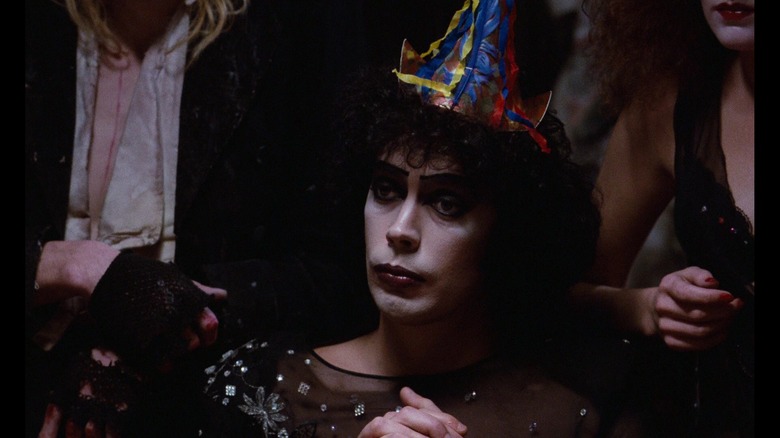
A Legacy That Endures
Fifty years after its release, "The Rocky Horror Picture Show" remains a cultural phenomenon that continues to captivate audiences. The film has become synonymous with midnight movie screenings, where devoted fans gather for weekly showings. These events are often accompanied by shadowcasts—live performances where fans reenact the film's scenes on stage. The atmosphere is lively and unpredictable, encouraging audience participation and creating an immersive experience.
The film’s bold approach to queerness and sexuality has made it a haven for LGBTQ+ communities. For many young queer and trans teens, attending a midnight screening of "Rocky Horror" was a way to feel accepted and empowered. The film’s celebration of self-expression and nonconformity has allowed attendees to embrace their identities freely. In some cases, these screenings have even led to unexpected connections, as people find themselves in the company of like-minded individuals.
Origins and Inspiration
"The Rocky Horror Picture Show" began as a stage musical titled "The Rocky Horror Show," created by Richard O'Brien during a period of personal downtime. The musical drew inspiration from glam rock aesthetics and classic sci-fi films that O'Brien admired. It features characters such as Brad Majors and Janet Weiss, who take shelter in a mysterious Gothic castle during a storm. Inside, they encounter eccentric inhabitants, including a bisexual transvestite space alien named Dr. Frank-N-Furter, who leads a life filled with dance, experimentation, and dark humor.
From Failure to Phenomenon
Despite its eventual success, the film faced significant challenges upon its initial release. It opened in 1975 to mixed reviews and poor box office performance. Early test audiences were reportedly unimpressed, with some walking out during screenings. Tim Curry, who played the flamboyant Dr. Frank-N-Furter, recalled the disappointment of watching the film at 20th Century Fox, where executives showed no reaction to the performance.
The film was shot on a modest budget of $1.4 million, with filming conditions described as cold and damp. Stars like Susan Sarandon, Barry Bostwick, and Peter Hinwood brought the story to life, while Meat Loaf portrayed the undead biker Eddie. Despite the challenges, the film found its audience when it was eventually released in the United States on September 26, 1975.
Midnight Movie Revolution
The film’s transformation into a midnight movie staple began when Fox decided to test it in New York City. The Waverly Theaters hosted the first midnight showing on April 1, 1976, and the response was overwhelming. Tim Curry, who lived nearby, attended the screening and was amazed by the enthusiastic crowd. The event became a social gathering, where attendees could meet new people and enjoy a night of entertainment.
As word spread, "Rocky Horror" gained popularity across the country. By the early 1980s, it was playing at midnight showings in cities nationwide. The Nuart theater in Los Angeles still screens the film every Saturday night with the live shadowcast Sins o’ the Flesh. Because Fox never pulled the film from general release, it holds the record for the longest-running movie in cinema history.
A Lasting Impact
The documentary "Strange Journey," which explores the rise of "Rocky Horror," was released in limited theaters on September 26, 2025. This film highlights the enduring legacy of the cult classic and its impact on pop culture. As the film celebrates its 50th anniversary, it continues to inspire new generations of fans who find joy and connection in its wild, unforgettable world.

Post a Comment